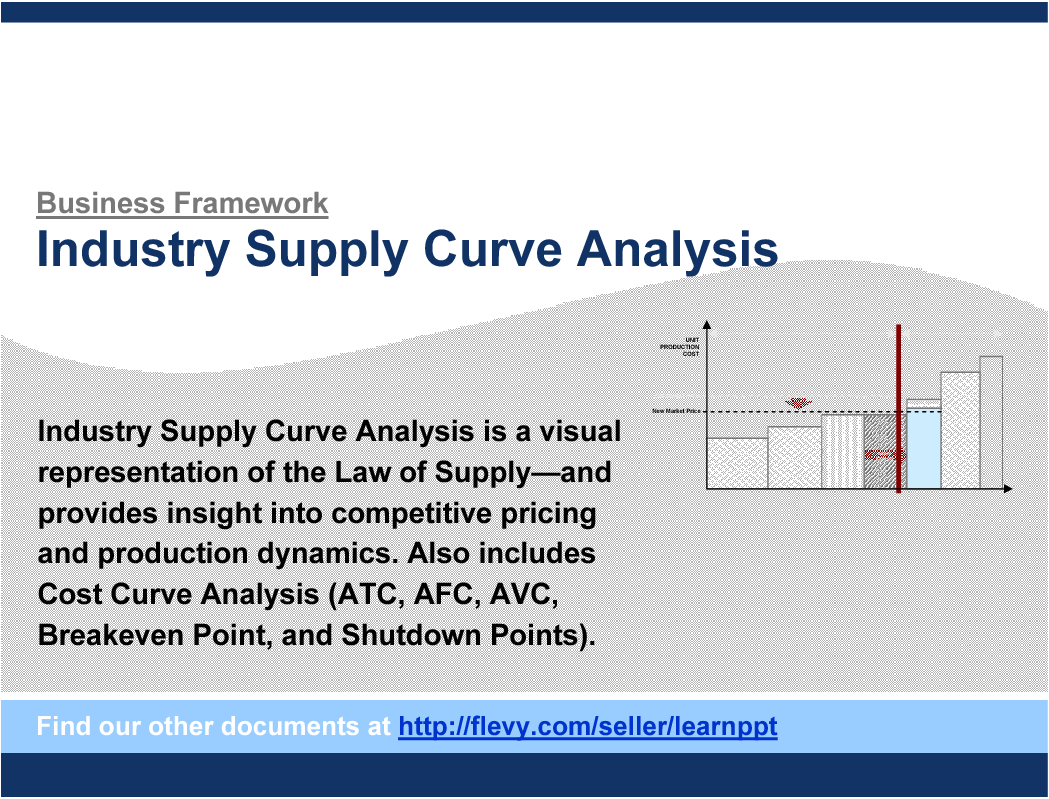Industry Supply Curve Analysis (PowerPoint PPT Slide Deck)
PowerPoint (PPT) 24 Slides
SUPPLY CHAIN ANALYSIS PPT DESCRIPTION
The Industry Supply Curve is graphic representation of the Law of Supply, which states that there is a direct relationship between price and quantity supplied. The Supply Curve slopes upward to the right. The slope tells us that the quantity supplied varies directly with price.
Analyzing the Industry Supply Curve also provides insight into competitive pricing dynamics and helps with scenario-based game analysis. The example provided at the end of this document illustrate the impact to price and competition as one player decides to change its production capacity.
This document also covers Cost Curve Analysis (ATC, AFC, AVC, Breakeven Point, and Shutdown Points).
This comprehensive PPT provides a meticulous 10-step approach to analyzing the Industry Supply Curve, ensuring a thorough understanding of market dynamics. Each step is designed to guide you through the process, from defining industry and market boundaries to verifying the resulting supply curve. The methodology includes identifying the number of producers, grouping them into segments, and selecting representative producers to calculate production costs and capacities.
The document delves into the nuances of cost curve analysis, breaking down fixed and variable costs, and illustrating how these impact production capacity. Key trends and concepts such as economies of scale and the behavior of average total costs (ATC) and average variable costs (AVC) are explored in detail. This analysis is crucial for understanding how production increases affect cost structures and competitive positioning within the industry.
Step-by-step instructions are provided to develop a cost model using detailed cost data, perform activity-based costing (ABC), and assess production differences among competitors. The final steps involve plotting the industry supply curve and conducting a "sanity check" to ensure the accuracy and strategic relevance of the results. This document is an invaluable resource for executives looking to optimize production strategies and gain a competitive edge in their industry.
Got a question about the product? Email us at support@flevy.com or ask the author directly by using the "Ask the Author a Question" form. If you cannot view the preview above this document description, go here to view the large preview instead.
Source: Best Practices in Supply Chain Analysis, Cost Optimization PowerPoint Slides: Industry Supply Curve Analysis PowerPoint (PPT) Presentation Slide Deck, LearnPPT Consulting
SUPPLY CHAIN ANALYSIS PPT SLIDES









